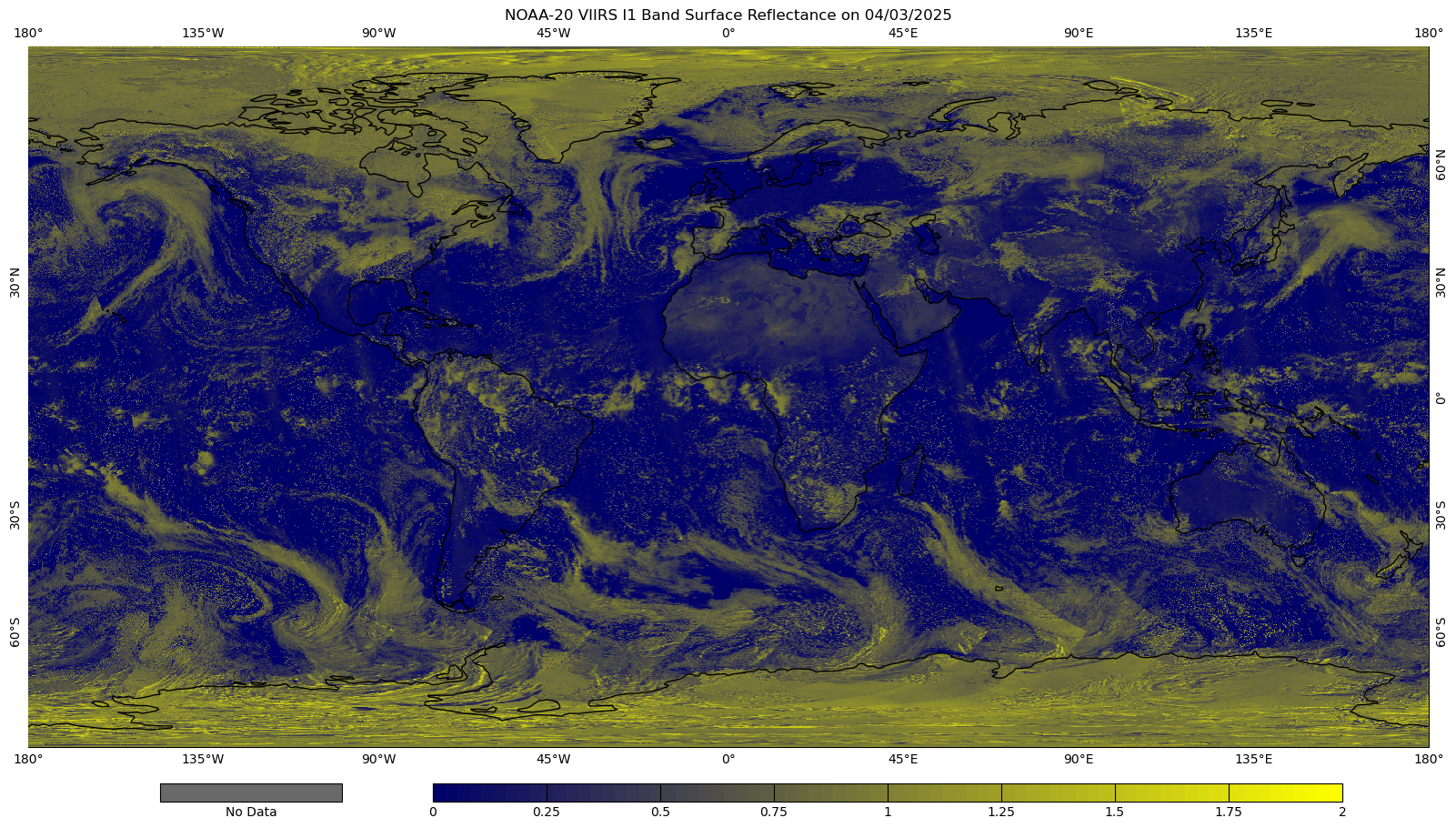The VIIRS Surface Reflectance (SR) product is generated from a combination of the VIIRS SDR and geolocations provided via the IDPS, and Global Forecast System (GFS), aerosol, cloud mask, and cloud height products available through the NDE. The output products include surface reflectance for channels I1, I2, I3, M1, M2, M3, M4, M5, M7, M8, M10, and M11. Output also includes five bytes of quality flags (QF1, QF2, QF3, QF4, QF5), which are each bitmasks representing various properties of both inputs and outputs. All products are output in netCDF-4.
The SR algorithm produces directional surface reflectance values for Visible Infrared Imaging Radiometer Suite (VIIRS) band centered at 0.412 µm, 0.445 µm, 0.488 µm, 0.555 µm, 0.645 µm, 0.672 µm, 0.865 µm (two different spatial resolutions), 1.24 µm, 1.61 µm (two different spatial resolutions), and 2.25 µm. The requirements provide continuity to the Moderate Resolution Imaging Spectroradiometer (MODIS) and the Advanced Very High Resolution Radiometer (AVHRR) surface reflectance data records. The VIIRS surface reflectance algorithm is based on a long heritage most recently coming from MODIS (Vermote et al., 1994; 1997; 2014; Vermote and Vermeulen, 1999). The spectral and spatial characteristics of the MODIS sensor are generally similar to the spectral and spatial requirements of the VIIRS sensor.
The Surface Reflectance EDR algorithm is designed to contain four main subroutines: Extract inputs, Quality Flags, Surface Reflectance Retrieval and Write Surface Reflectance EDR. The Surface Reflectance Retrieval subroutine is the main subroutine since it performs the Lambertian approximation (atmospheric correction), the adjacency adjustment, and the bidirectional reflectance distribution function (BRDF) coupling adjustment.
For more information on the science algorithms, see our documentation page.




